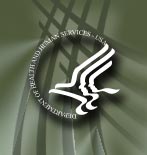U.S.
Department of Health and Human Services
Advisory Committee on Organ Transplantation
Recommendations
to the Secretary
Critical
Pathway for the Organ Donor (appendix 3)
printer
friendly Critical Pathway (Adobe Acrobat – get
the free Reader)
Collaborative
Practice
The following professionals may be involved to enhance the donation
process.
Check all that apply.
o
Physician
o Critical care RN
o Organ Procure-ment Organiza-tion (OPO)
o
OPO Coordinator (OPC)
o MedicalExaminer (ME)/Coroner
o Respiratory
o
Laboratory
o Radiology
o Anesthesiology
o OR/Surgery staff
o Clergy
o
Social worker
Phase
I: Referral
Collaborative Practice
o Notify physician regarding
OPO referral
o Contact OPO ref: Potential donor with severe brain insult
o
OPC on site and begins evaluation: Time ___Date ___
o Ht____ Wt ____ as documented
o
ABO as documented _____
o Notify house supervisor/charge nurse of presence
on unit
Labs/Diagnostics
none
Respiratory
o Pt on ventilator
o
Suction q 2 hr
o Reposition q 2 hr
Treatments/Ongoing Care
none
Medications
none
Optimal
Outcomes
The potential donor is identified & a referral is made to
the OPO.
Phase
II: Declaration of Brain Death and Consent
Collaborative Practice
o
Brain death documented
Time _____ Date _____
o Pt accepted as potential
donor
o MD notifies family of death
o Plan family approach with OPC
o
Offer support services to family (clergy, etc)
o OPC/Hospital staff talks to
family about donation
o Family accepts donation
o OPC obtains signed consent-
& medical/social history
Time _____ Date _____
o ME/Coroner notified
o ME/Coroner releases body for donation
o Family/ME/Coroner denies donation
- stop pathway - initiate post-mortem protocol - support family
Lab/Diagnostics
o
Review previous lab results
o Review previous hemodynamics
Respiratory
o
Prep for apnea testing: set FiO2 @ 100% and anticipate need to decrease rate if
PCO2.< 45 mm Hg
Treatments/Ongoing Care
o Use warming/cooling
blanket to maintain temperature at 36.5° C - 37.5 °C
o NG to low intermittent
suction
Medications
none
Optimal
Outcomes
The family is offered the option of donation & their decision
is supported.
Phase
III: Donor Evaluation
Collaborative Practice
o Obtain pre/post transfusion
blood for serology testing (HIV, Hepatitis, VDRL, CMV)
o Obtain lymph nodes
and/or blood for tissue typing
o Notify OR & anesthesiology of pending
case
o Notify house supervisor of pending donation
o Chest & abdominal
circumference
o Lung measurements per CXR by OPC
o Cardiology consult as
requested by OPC
o Organ recovery process discontinued - donor organs unsuitable
for transplantation
Labs/Diagnostics
o Blood chemistry
o CBC +
diff
o UA o C & S
o PT, PTT
o ABO o A Subtype
o Liver function
tests
o Blood culture X 2 / 15 minutes to 1 hour apart
o Sputum Gram Stain
& C & S
o Type & Cross Match ____# units PRBCs
o CXR o ABGs
o
EKG o Echo
o Consider cardiac cath
o Consider bronchoscopy
Respiratory
Continue
Phase II
o Maximize ventilator settings to achieve SaO2 98 - 99%
o PEEP
= 5cm O2 challenge for lung place-ment FiO2 @ 100%, PEEP @ 5 X 10 min
o ABGs
as ordered
o VS q 1
Treatments/Ongoing Care
Continue Phase II
o
Check NG placement & output
o Obtain actual Ht _____ & Wt _____ if
not previously obtained
Medications
o
Medication as requested by OPC
Optimal
Outcomes
The donor is evaluated & found to be a suitable candidate
for donation.
Phase
IV: Donor Management
Collaborative Practice
o OPC writes new orders
o
Organ placement
o OPC sets tentative OR time
o Insert arterial line/ CVP/2
large-bore IVs
Lab/Diagnostics
o Determine need for additional lab
testing
o CXR after line placement (if done)
o Serum electrolytes
o H
& H after PRBC Rx
o PT, PTT
o BUN, serum creatinine after correcting
fluid deficit
o Notify OPC for
___ PT >14___ PTT < 28
___ Urine
output is
< 1 mL/Kg/hr
___ > 3 mL/Kg/hr
___ Hct < 30 / Hgb
< 10
___ Na > 150 mEq/L
Respiratory
Continue Phases II
and III
o Notify
OPC for
____ BP < 90 systolic
____ HR < 70 or > 120
____
CVP < 4 or > 11
____ PaO2 < 90 or
____ SaO2 < 95%
Treatments/Ongoing
Care
Continue Phase II
Medications
Continue Phase III
o
Fluid resuscitation - consider
crystolloids, colloids, blood
o DC meds except pressors & antibiotics
o
Broad-spectrum antibiotic if not previously ordered
o Vasopressor support to
maintain BP > 90 mm Hg systolic
o Electrolyte imbalance: consider K, Ca,
PO4, Mg replacement
o Hyperglycemia: consider Insulin drip
o Oliguria: consider
diuretics
o Diabetes insipidus: consider antidiuretics
o Paralytic as indicated
for spinal reflexes
Optimal
Outcomes
Optimal
organ function is maintained
Phase
V: Recovery
Collaborative Practice
o Checklist for OR
o Supplies
given to OR
o Prepare patient for transport to OR
o IVs o Pumps
o O2
o Ambu
o Peep valve
o Transport to OR
Date ________
Time ________
o
OR nurse reviews consent & brain death documentation & checks patient's
ID band
Diagnostics
o Labs drawn in OR as per surgeon or OPC request
o
Communicate with pathology: Bx liver and/or kidneys as indicated
Respiratory
Continue
Phases II and III
o
Portable O2 @ 100% FiO2 for transport to OR
o Ambu bag and PEEP valve
o
Move to OR
Treatments/Ongoing
Care
Continue Phase II
o
Set OR temp as directed by OPC
o Post mortem care at conclusion
of case
Medications
Continue
Phase III
o DC antidiuretics
o Diuretics as needed
o 350 U heparin/kg
or as directed by surgeon
Optimal
Outcomes
All potentially suitable, consented organs are recovered for transplant.
The
Critical Pathway was developed under contract with the U.S. Department of Health
and Human Services, Health Resources and Services Administration, Division of
Transplantation.





